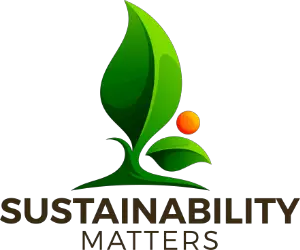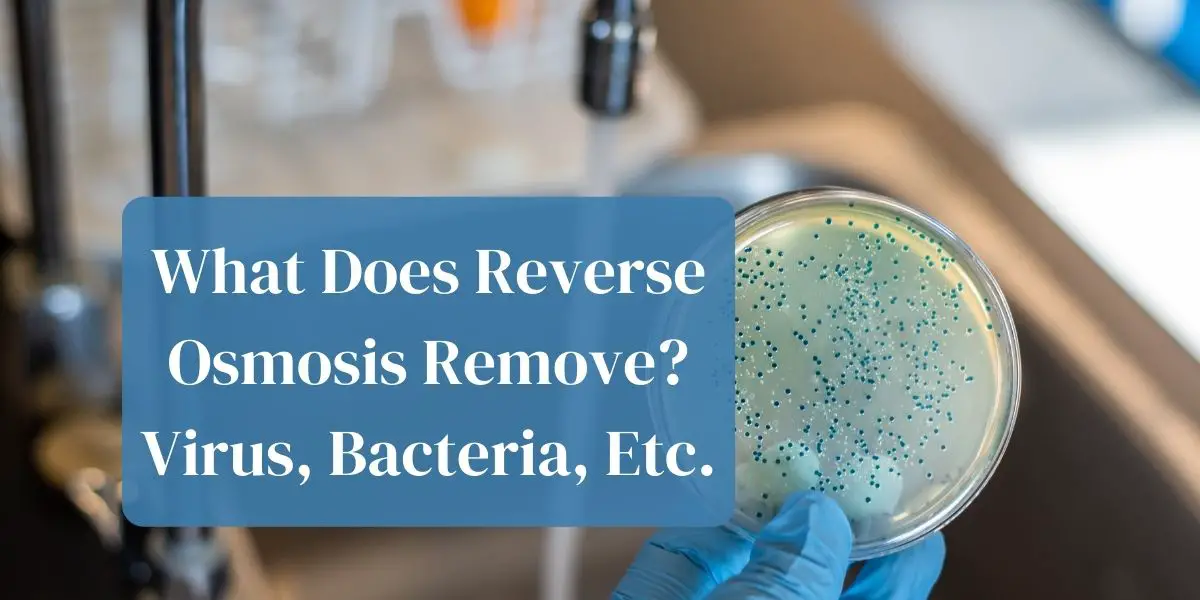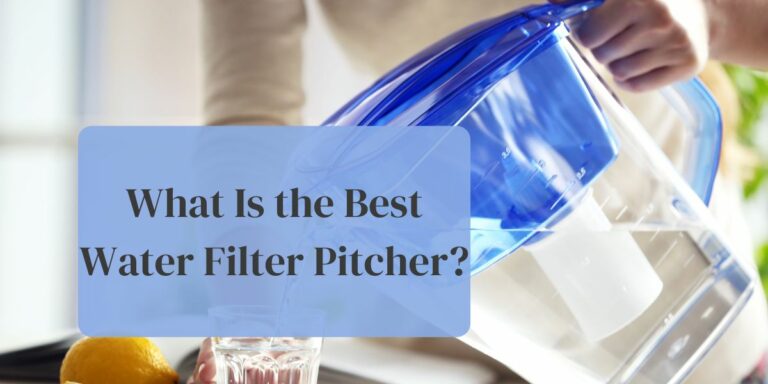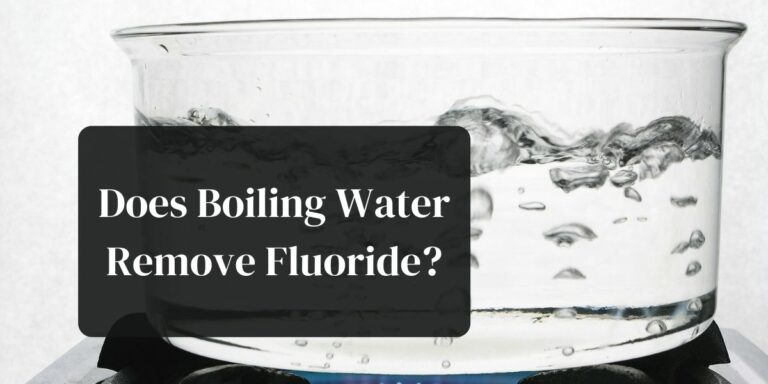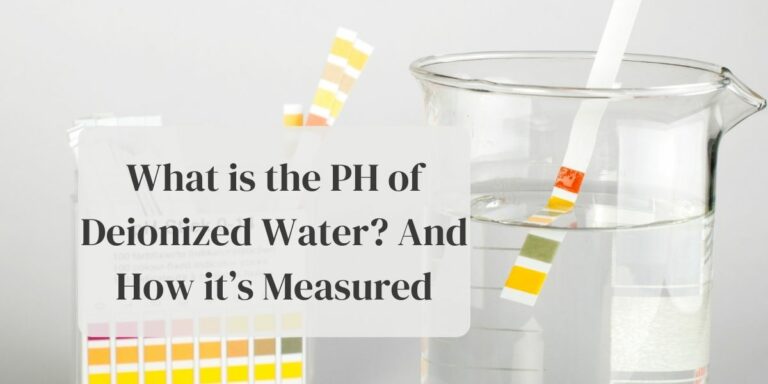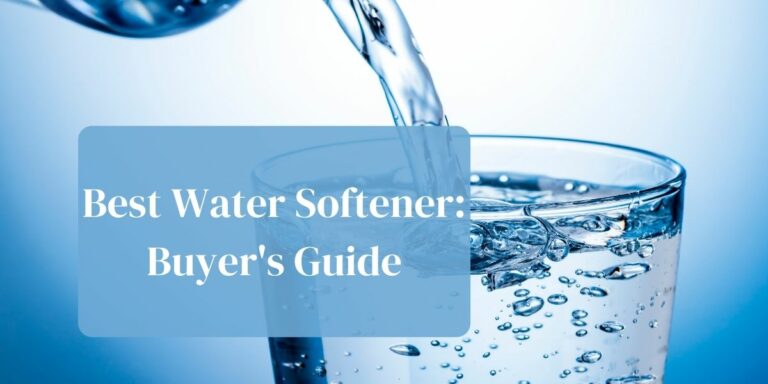Since there are loads of water treatment options these days, it is difficult to keep track of the contaminants and impurities each of these water treatments removes. To ensure you are fully informed, we take a closer look at one specific filtration method, reverse osmosis also known as RO.
Table of Contents
- What contaminants does reverse osmosis remove?
- Does reverse osmosis remove bacteria?
- Does reverse osmosis remove arsenic?
- Does reverse osmosis remove salt?
- Does reverse osmosis remove pesticides and VOCs?
- Does reverse osmosis remove heavy metals?
- Does reverse osmosis remove minerals?
- Conclusion
What contaminants does reverse osmosis remove?
Reverse osmosis filters have a size that is usually around 0.0001 micron, this means that any contaminants larger than this size will not pass through the membrane of reverse osmosis filters.
You will find that reverse osmosis systems are remarkably effective to remove bacteria, viruses, protozoa, and chemical contaminants. To ensure you have the full spectrum of contaminants that can be removed by reverse osmosis systems, we have described each in a bit more detail below.
Does reverse osmosis remove bacteria?
Reverse osmosis systems are really effective for the removal of bacteria. This includes bacteria with a size larger than 0.0001 micron. Some examples of these bacteria include:
Campylobacter
This bacteria can cause infection and usually stems from untreated drinking water, undercooked poultry, or raw poultry. The resulting infection usually clears up on its own, but some may require treatment with antibiotics. Symptoms of this kind of infection include bloody diarrhea, fever, nausea and stomach cramps.
Salmonella
Salmonella is a relatively common but also dangerous bacterial disease that affects the intestinal tract. People can get exposed to this bacteria through water that has not had any water treatment and contains fecal matter. It is also possible to get infected through contaminated food. Some cases of salmonella will require hospital treatment.
E. coli
Another bacteria that is common and can be removed by reverse osmosis in drinking water is E. coli. Some strains of E. coli can cause severe diarrhea and one specific strain can make you really stick, more specifically the O157:H7.
Does reverse osmosis remove arsenic?
The answer to this question is both yes and no. The reason for that is that arsenic can have different forms in drinking water and may require special water treatment.
A reverse osmosis membrane can remove most impurities from water, including arsenic V. However, substances such as arsenic III are quite small and will not be filtered out by the RO membrane. To remove arsenic III, a special water treatment is needed to convert arsenic III into arsenic V. The latter can then go through the regular filtration systems and be blocked out.
Does reverse osmosis remove salt?
The process of reverse osmosis can filter out salt. So, if you add seawater through the filtration systems of a RO system, filtration will turn seawater into drinkable water. It will also remove other harmful molecules during the water treatment.
Does reverse osmosis remove pesticides and VOCs?
A reverse osmosis membrane can filter out some pesticides and volatile organic chemicals, but not all. This is important to know, as this means the filtration system is not suitable for certain areas.
To filter out volatile organic chemicals and pesticides, your filtration system must meet certain criteria. So, the answer to this question is: it depends on the filtration system and the membrane you have installed.
Volatile organic compounds are contaminants in the drinking water with a low boiling point. When they encounter normal temperatures, they can turn into harmful gases or vapors.
For an RO filtration system to remove VOCs, the installation must contain a special carbon filter. This filter will be situated before or behind the membrane and provide an additional filter function specifically for the volatile organic chemicals.
Most reverse osmosis systems are commonly installed with an additional carbon filter. Even those freestanding options can contain a carbon filter for VOCs, this includes common brands such as Express Water.
Does reverse osmosis remove heavy metals?
Yes, to a certain extend. Most RO membrane filtration systems have shown to be effective at the removal of low levels of heavy metals. This includes common metals such as cadmium, zinc, nickel, and lead.
One of the issues that can occur with the removal of higher levels of heavy metals is that they can block the filter membrane; this because metals can oxidise in aerobic conditions.
When you are dealing with higher levels of heavy metals in your water, it could be useful to look into selective ion exchange resin such as Lewatit TP 207 or 208. That being said, an RO filter is usually enough for most households, as they only encounter lower levels of heavy metals.
Does reverse osmosis remove minerals?
Unfortunately, the powerful reverse osmosis membrane does not only remove contaminants. It can also remove helpful minerals. After all, the RO membrane only lets through particulars smaller than 0.0001 microns. Some minerals are larger than 0.0001 microns, which means they are completely removed from the drinking water.
To solve this problem, you may choose to remineralize reverse osmosis water.
What beneficial things does RO remove?
Drinking water should contain minimum levels of certain essential minerals . . . . Sufficient evidence is now available to confirm the health consequences from drinking water deficient in calcium or magnesium.
? Frantisek Kozisek, National Institute of Public Health, Czech Republic
As previously mentioned, an RO system can remove beneficial compounds that are larger than 0.0001 micron. Here is a comprehensive overview of two of those substances and the implications of those substances missing from your drinking water.
Calcium
One of the minerals that can be removed from water is calcium. Calcium is a mineral that is vital to the human body. After all, this mineral helps with blood clotting, muscle contraction, as well as maintaining the strength of bones and teeth.
It is important to realise that the human body loses calcium on a daily basis. The human body will lose calcium through the skin, hair, urine, feces, and much more. In addition to that, the body is unable to produce calcium on its own, which means it is even more important to obtain calcium from food and water.
Depending on your gender and age, you need a different amount of calcium every day. For example women over fifty need 1200 mg each day, while women under fifty only need 1000 mg.
Aside from our drinking water, good levels of calcium can be obtained from calcium-rich foods. These foods includes milk, yoghurt and cheese. Soymilk and certain types of bottled water with added calcium can also provide a good source of calcium.
Magnesium
While calcium is one of the best-known minerals, magnesium is not any less important. In fact, this nifty little mineral is responsible for more than three-hundred enzyme processes in the human body.
Some of the processes magnesium is responsible for include protein synthesis, muscle and nerve functioning, blood glucose regulation, blood pressure regulation, energy production, and so much more.
The average adult body stores 50 to 60% of magnesium in the bones and the soft tissue. There is also a level of magnesium in the blood serum, albeit less than 1%.
Contrary to popular belief, it is incredibly difficult to determine if someone is short on magnesium. The reason for that is because less than 1% of magnesium is found in the blood, making it difficult to determine how much is actually present in somebody’s body. Much like calcium, variable levels of magnesium are needed for good health, which are subject to age and gender.
Fortunately, there are many magnesium -rich foods that can be used as your source of magnesium. Non-reverse osmosis water is also rich in magnesium. Some reverse osmosis water can also be enriched with magnesium, but this requires an additional mineral addition in the system.
Good sources of magnesium include green leafy vegetables such as spinach and legumes. Other good sources include nuts, seeds, and whole grains. The highest source of magnesium in terms of milligram per serving are dry roasted almonds.
Unfortunately, it is quite common for men and women to experience a lack in magnesium. A shortage can occur by not consuming enough magnesium in your diet. However, it can also be caused by having too much zinc. Those who have such a shortage often have to use dietary supplements to add more magnesium into their diet. Magnesium can usually be found in multivitamins, but also prescribed medications from your physician.
Finally, it is also important to know that magnesium can be one of the primacy ingredients in laxatives. Milk of Magnesia is one of the products that contains high levels of magnesium for each tablespoon. Since the level of magnesium exceeds the daily recommended intake, your body does not absorb these higher levels of magnesium.
Conclusion
An RO system is beneficial, but only in certain instances. For example, if you have groundwater with high levels of lead and other harmful substances, then an RO system will be better to protect your overall health.
The same goes for other heavy metals and bacteria, especially for vulnerable people that suffer from certain medical conditions. Of course, it is always best to test your water for certain substances before you choose the most appropriate filter.
